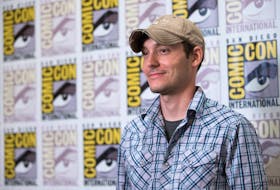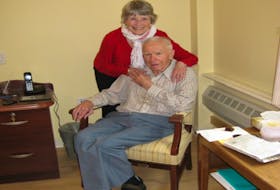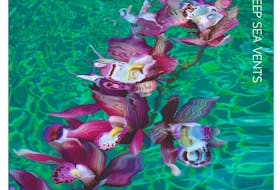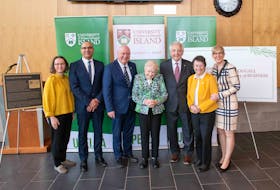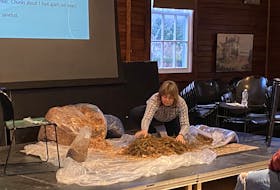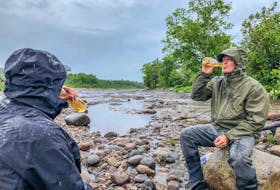They’re missing out.
There’s another side to Vegas, a quirky side, that makes Sin City an even more fascinating place to visit.
The Neon Museum
Ever wonder where the old, flashy signs from defunct casinos and hotels end up? The best of these glittering pieces of history end up at the Neon Museum, a kind of “Boneyard” for retired signs. Many of these large, colourful relics — with names like Stardust, Aladdin, Horseshoe, Dunes and Moulin Rouge — are lovingly restored and placed around the property so guests can admire them up close. A knowledgeable guide spends an hour taking visitors along the paths and describes each sign’s remarkable history. A night tour is especially interesting because many of the signs are lit up to their original brilliance.
The Mob Museum
Several of the early, glitzy casinos from the 1930s and 40s were built with Mafia money so it’s appropriate that quirky Las Vegas is home to the Mob Museum. Situated just north of Fremont Street, the $42 million museum with over 1,000 artifacts is fittingly housed in a former federal courthouse where the Kefauver Committee held one of its 1950 meetings on Organized Crime.
This unique and dynamic museum traces the history of the Mafia in the USA, from its New York and Chicago beginnings to its major influence on Las Vegas. It uses state-of-the-art, touch-screen technology to tell the story of casino cheating, mug shot identification, Tommy gun anatomy and, most fascinating to us, the St. Valentine’s Day Massacre in Chicago. The actual brick garage wall (with bullet holes) has been painstakingly restored here. The museum also includes a mock-up of the Electric Chair that ended the lives of many mobsters.
National Atomic Testing Museum
Starting in 1951, the Nevada Test Site, just north of Las Vegas, was the key American location for the testing of nuclear weapons. It became a kind of sideshow in the city with viewing parties held on the roofs of bars and casinos on Fremont Street as huge mushroom clouds rose into sky. Merchants took advantage of the era with store names like Atomic Liquor (still in business) dotted all over town.
Now a Smithsonian affiliate, the National Atomic Testing Museum follows the history of atomic weapons and includes exhibits like the Ground Zero Theatre and a simulated blast, the Control Point room where nuclear countdowns took place, historic radiation detectors, blast shelters and pop culture items from the area including bomb shaped salt & pepper shakers and cheesecake photos of Miss Atomic Bomb, 1957. Weird.
Downtown Container Park
After passing the Gold and Silver Pawn Shop (we had to visit the quirky home of History Channel’s “Pawn Stars”), we stopped just east of the Fremont Street Downtown area and the Container Park. Constructed entirely out of recycled and stacked shipping containers, it’s now the funky home of galleries, restaurants, used clothing stores and gift shops. At the entrance, there’s a giant metal grasshopper that breathes fire at night. Also in this growing and ultra-cool area of Vegas are many imaginative wall murals and sculptures.
Spring Preserve
Many visitors wonder how Las Vegas, on the fringes of the Mojave Desert, gets its water supply. Spring Preserve, an unusual complex set on 180 acres at the site of the original spring that fed the city, combines a botanical garden, live animal exhibits, hiking trails and an excellent interactive museum. We learned about the delicate balance of nature and saw a re-creation of a Southern Paiute Indian Village. The most popular exhibit is a simulation of a flash flood when 20,000 litres of water are released to rush down a canyon. There’s also a simulation of what it was like to work on the nearby Hoover Dam, the construction that tamed the Colorado River and provided fresh water for Las Vegas. The whole park, with displays about recycling, responsible gardening and solar power, is an excellent education tool and in total contrast to The Strip’s hectic pace.
The High Roller
Las Vegas likes to boast that it’s bigger, better and badder. We had to return to The Strip to try a thrill ride that fits the category. Part of the huge entertainment complex called The LINQ (dozens of open air shops and restaurants), The High Roller, opened in 2014, is a massive Ferris Wheel that was purposely constructed to be the world’s largest. At 550 feet high, it’s 100 feet taller than the iconic London Eye and has fundamentally changed the Vegas skyline. Each of its 28 fully-enclosed, air conditioned pods holds up to 40 passengers and takes 30 minutes for a full rotation. We were skeptical at first but were then dazzled by the complex engineering and the amazing views of the city, the nearby mountains and much of southern Nevada. It’s a ride worth taking.
With all the unusual attractions Las Vegas has to offer (in addition to endless gambling, entertainment and fine dining) and its obvious excesses, we have become huge fans of the city. On this trip we didn’t see everything we wanted. Next time, it's The Pinball Hall of Fame. Kaching!
John and Sandra Nowlan are travel writers based in Halifax


